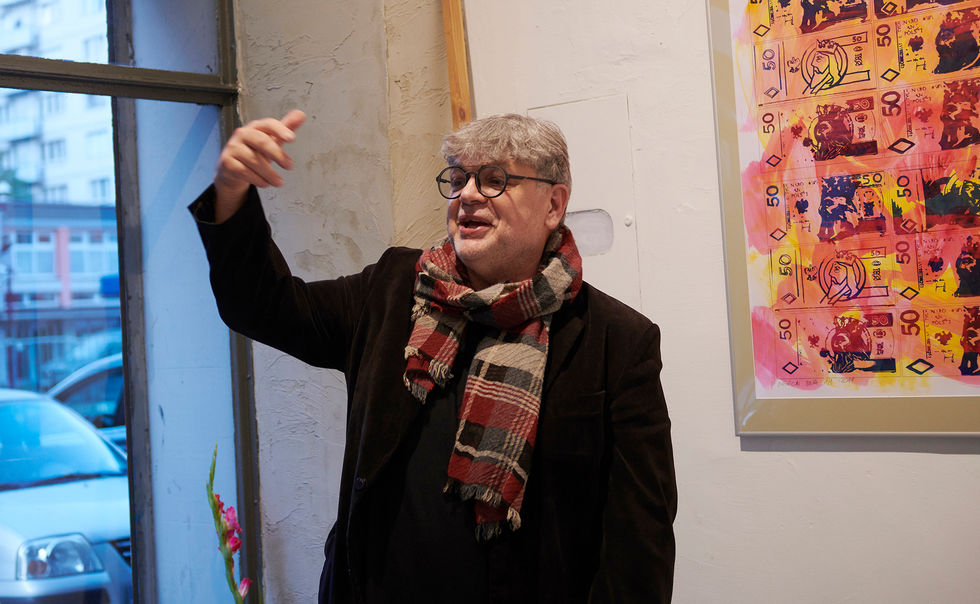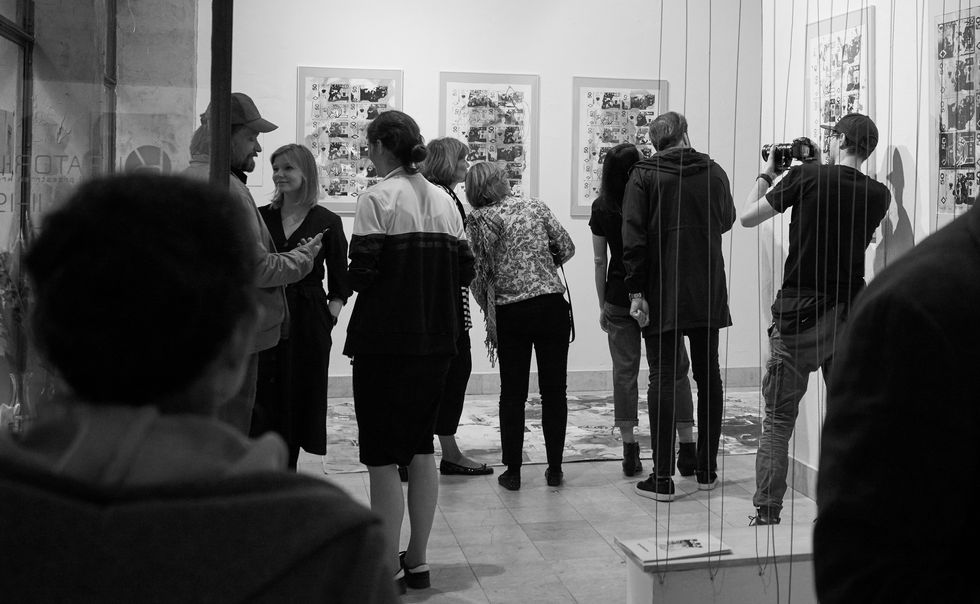
#grupawolno
You know nothing, you understand nothing
28-29.09.2019
Galeria Kuratorium | 00-121 Warsaw
If [the citizens] studied their paper money for clues as to what their country was all about, they found, among a lot of other baroque trash, a picture of a truncated pyramid with a radiant eye on top of it, like this: … Not even the President of the United States knew what that was all about. It was as though the country were saying to its citizens, “In nonsense is strength.”
– Kurt Vonnegut, Breakfast of Champions, or Goodbye Blue Monday
During the happening at the opening of the first exhibition by #grupawolno in December 2018, among texts on art and philosophy, Marcin Osiowski’s proposal on the fifty-złoty per diem for artists was quoted:
"Art is a subject of consideration for philosophy. The Kantian question is: should it be? What makes it a philosophical matter, a subject for philosophy? Here, we are facing a much deeper question on Ludwig Wittgenstein’s legacy for aesthetics. For Wittgenstein, philosophy’s main task is to free our mind from confusion, puzzlement and illusion caused by language. We have mentioned old Immanuel Kant – called so at the Patriarshiye Ponds by he whose one eye was green for no apparent reason – so it is only fitting to mention Kant’s apriorism; the notion of the mind’s primacy in cognitive processes and thus in evaluating art as well. And since we are supposed to talk about value, let’s say a word about money perhaps. Politicians can obviously earn a living; the artist, too, can survive for five tenners a day, that’ll do; he’ll buy a few beers, a pack of rubbers, he can afford a bottle, too, and he’ll have some left over for chow.”
This was the inspiration for a work of art devoted to the fifty-złoty banknote: its shades of blue and the characteristic profile of a Polish king. Osiowski and Słonecka created a number of serigraphs with King Kasimir the Great’s image, and one large collage painting 2.30 m x 10 m, entitled You Know Nothing, You Understand Nothing (acrylic, oil, serigraph, drawing, paper on canvas). Between streaks of blue, glued to the canvas were photographs of the artists themselves, their friends and mundane objects, and drawings of inspiring figures such as Rembrandt or Wittgenstein.
Many artists before them have tackled the subject of currency design, images on money or returning motifs; others have used imitations or genuine banknotes. While most of these works have referred to the imagery of wealth and capitalism, #grupawolno does not take the banknote at its face value, approaching it rather in a playful and seemingly absurdist way as the minimum per diem necessary for an artist’s survival.
During their performance, which lasted several hours, Osiowski and Słonecka cut the canvas into pieces, and sold them for a price, dependent on the number of fifty-złoty notes depicted in the fragment selected by visitors. Any visitor could pick a fragment of the painting which would then be professionally cut out and stretched over a frame. For print enthusiasts, the artists had prepared small serigraphs with the multiplied likeness of King Kasimir the Great. The show was accompanied by the non-painting member of #grupawolno, Antoni Gustowski, who had prepared a musical illustration for this unusual happening/exhibition. His repertoire comprised of pieces composed for this occasion with elements of improvisation and aleatoricism as well as songs “intercepted” as ready-mades that he calls chansons trouvées.
The action was ironic and constituted a sort of commentary on the patterns which govern the art market. Moreover, #grupawolno reflected on the status of the contemporary artist. The action referred to discussions on the artistic profession and its modern conditions. In 2012, the first Polish artists’ strike was organized by the Citizens’ Modern Art Forum. A photograph of Zbigniew Libera with the sign “I am an artist, but this does not mean I work for free” became a symbol of that event. The discussion continues, and artistic work is sometimes treated as a profession now. The actions of #grupawolno have so far undermined the myth of art’s elitism, its unavailability and prestige which are rarely reflected in the economic situation of its creators.
Curator and author of the test: Katarzyna Piskorz
photo by Adam Gut









![2019-09-28 - Nic nie widzicie nic nie rozumiecie (50 plus)_09_29_c - [fot Adam Gut] 2000px](https://static.wixstatic.com/media/4d237b_eba2fe5c343f4748a05f1e3ff1439891~mv2.jpg/v1/fill/w_980,h_604,q_90,enc_avif,quality_auto/4d237b_eba2fe5c343f4748a05f1e3ff1439891~mv2.jpg)





